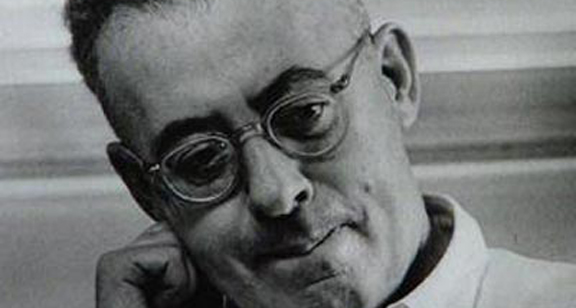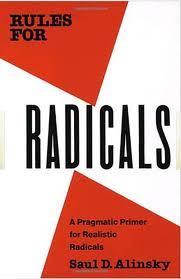Many students, upon arriving at the campus of their choosing, find themselves under ideological assault as soon as they unpack their bags. Today, university faculty is statistically inclined toward a liberal, secularist view of the world, and they are not bashful about engaging students with the goal of converting them to that same view through an approach that Alinsky has helped to articulate. When that happens, students are often found to be like deer in the headlights.
With even a little understanding of “rules” that radicals tend to act upon, these same students can turn the pressure around and seek to become change agents for good on their own campuses.
The central structure of this course is the 13 Rules enumerated in Rules for Radicals. Alinsky referred to the book as a practical primer for what he calls “realistic radicals.” Saul had watched much of the progressive hippy movement of the 60’s fail to reach its goals because of what he claimed was an inability to organize and follow simple tactics that he felt would have brought about far greater change from those times. It is toward the end of this small book that he sets forth thirteen rules or tactics that when followed should help even a small movement bring about significant change.
Who was Saul Alinsky?
Saul Alinsky was born in Chicago, Illinois in 1909. He became particularly interested in social Marxism while studying the history of the Capone gang at Chicago University. He worked at organizing communities in Chicago so they could empower themselves, most notably Chicago’s “Back of the Yards” area (the scene of Upton Sinclair’s The Jungle). These early experiences led him to found and lead The Industrial Areas Foundation for years. In his later years he saw many of the movements of the Sixties suffering from a lack of clear tactics and sought to write down his own thoughts about his experiences, which included several incarcerations, in Reveille for Radicals. It was during this time (1971) that he also penned Rules for Radicals to spell out the theories and tactics that would bring success to community organizations.
Alinsky died in 1972. By that time, he had already made a huge impact. Alinsky’s views and tactics were based not on Stalin’s revolutionary violence, but on the Neo-Marxist strategies of Antonio Gramsci. Gramsci was an Italian Communist. Relying on gradual change, infiltration and the dialectic process (asking questions of one’s opponent and having dialogue) rather than a bloody revolution, Gramsci’s transformational Marxism was so subtle that few even noticed the deliberate changes he brought about in Italy. Saul sought his whole life to bring this form of Marxism to America.
A Brief Introduction to Rules for Radicals
As a Marxist he believed that revolution was the key to things getting better. He wrote the book to set forth what he considered to be the inherent human rules for communication – the essential skills required for revolution. Alinsky is pretty clear from the beginning that he was willing to use any means or any idea that would bring about his desired revolution, and his inspiration as noted on the Dedication page makes the point:
Lest we forget at least an over-the-shoulder acknowledgment to the very first radical: from all our legends, mythology, and history…the first radical known to man who rebelled against the establishment and did it so effectively that he at least won his own kingdom — Lucifer.
Reading Rules for Radicals provides insights into the worldview that inspires many of the professors and administrators on American university campuses today. To ensure that you have at least some “snapshots” of Alinsky’s views, following are some excerpts from the book:
What follows is for those who want to change the world from what it is to what they believe it should be. The Prince was written by Machiavelli for the Haves on how to hold power. Rules for Radicals is written for the Have-Nots on how to take it away. (p. 3)
Alinsky articulates the ingredients required for a youth-inspired revolution:
Our youth are impatient with the preliminaries that are essential to purposeful action…. A reformation means that masses of our people have reached the point of disillusionment with past ways and values. They don’t know what will work but they do know that the prevailing system is self-defeating, frustrating, and hopeless. They won’t act for change, but won’t strongly oppose those who do. The time is then ripe for revolution. (pp. xx, xxii)
When radical youth are ready to take action, Alinsky gives them the following instruction:
Do one of three things. One, go find a wailing wall and feel sorry for yourselves. Two, go psycho and start bombing – but this will only swing people to the right. Three, learn a lesson. Go home, organize, build power and at the next convention, you be the delegates. (p. xxiii)
A good portion of Alinsky’s work is a consideration of social ethics from a purely pragmatic point of view. He believed in what is called “situational ethics” – the idea that the end will always justify whatever means are used to bring it about. The following are some quotes on his view of this:
The most unethical of all means is the non-use of any means. (p. 26)
…to the organizer, compromise is a key and beautiful word. It is always present in the pragmatics of operation. It is making the deal, getting that vital breather, usually the victory. If you start with nothing, demand 100 per cent, then compromise for 30 per cent, you’re 30 per cent ahead. (p. 59)
With very rare exceptions, the right things are done for the wrong reasons. It is futile to demand that men do the right thing for the right reason – this is a fight with a windmill. (p. 76)
An organizer working in and for an open society is in an ideological dilemma to begin with, he does not have a fixed truth — truth to him is relative and changing; everything to him is relative and changing…. To the extent that he is free from the shackles of dogma, he can respond to the realities of the widely different situations…. (pp. 10-11)
The methods of radicalism that emerge from this are campaign-centered, in ways that will strike some as harsh and manipulative in their tactical edge, almost a “bottom-up” Machiavellian approach:
If the organizer begins with an affirmation of love for people, he promptly turns everyone off. If, on the other hand, he begins with a denunciation of exploiting employers, slum landlords, police shakedowns, gouging merchants, he is inside their experience and they accept him. (p. 98)
The organizer dedicated to changing the life of a particular community must first rub raw the resentments of the people of the community; fan the latent hostilities of many of the people to the point of overt expression. He must search out controversy and issues, rather than avoid them, for unless there is controversy people are not concerned enough to act. (pp. 116-117)
Here’s an introduction to the Rules for Radicals experience from one of our student hosts from the Leadership Institute, to prepare you for your engagement with Alinsky’s ideas. Because the Liberal application of Alinsky’s rules has been popularized through unions and community organizing groups like ACORN, and are well known in that context, these students represent a generally contrarian perspective to the author and the book. In the spirit of free thinkers, they at once distance themselves from Alinsky and his purposes, while highlighting how the 13 Rules can work for those who represent very different ideals.









